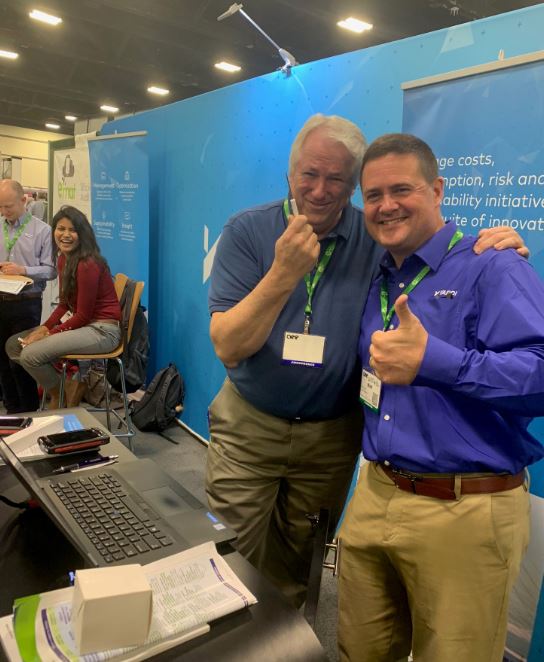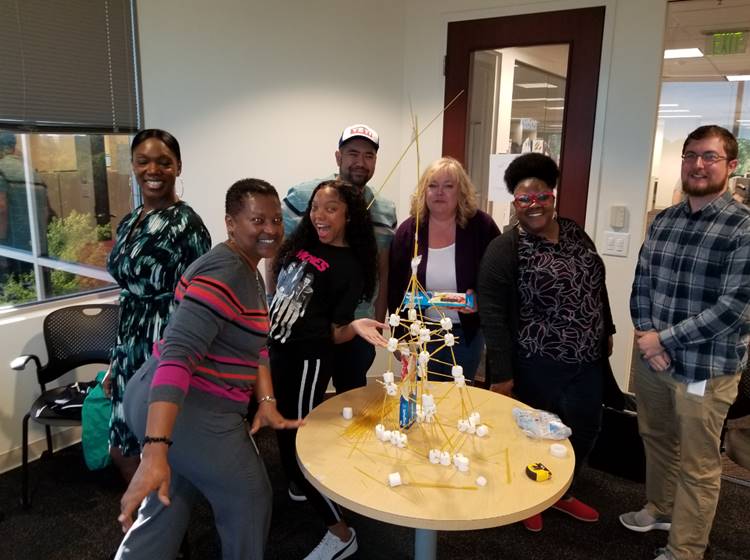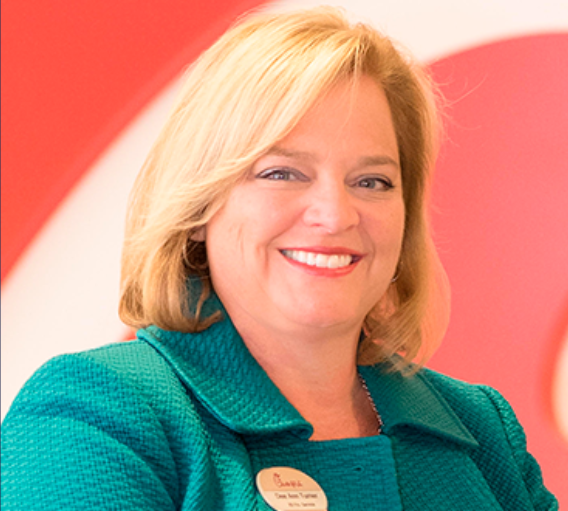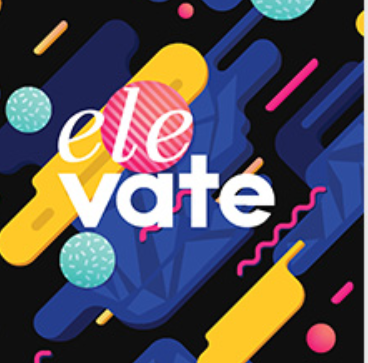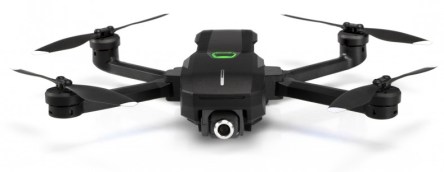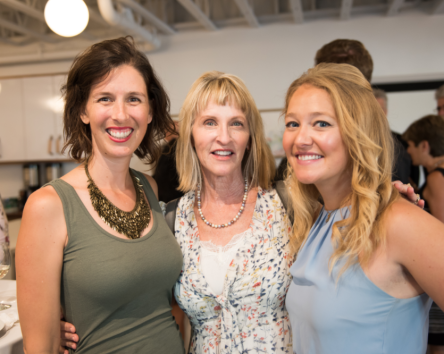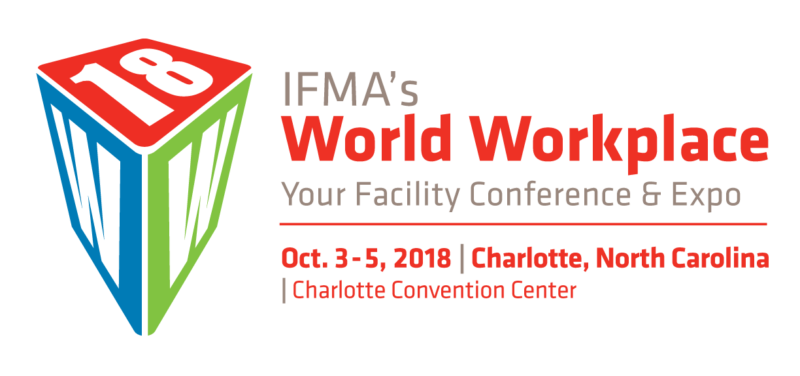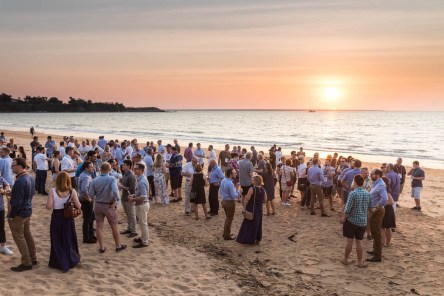Lack of transparency around pricing in the senior living industry is a known frustration. A simple web search reveals hundreds of articles lamenting how difficult it is to find the answer to a simple question when researching elder care communities: How much does it cost to live there? Would-be residents and their families crave this information. In fact, 68% of residents and 75% of family members and caregivers complain about a lack of pricing transparency within senior living communities. But seniors and their loved ones aren’t the only group grappling with a lack of clarity around costs. Senior living providers themselves struggle to acquire data on actual rates being charged within the industry. This information gap has resulted in operators paying a premium for capital—and passing that expense on to residents. To combat pricing obscurity, the National Investment Center for Seniors and Housing Care (NIC), partnering with Yardi, launched the Seniors Housing Actual Rates Initiative, which reveals actual rates and leasing activity submitted by senior living operators for the very first time. Many communities have already committed to providing monthly data feeds to NIC for the Actual Rates Initiative, covering more than 250,000 senior housing units nationwide. This new pricing data, available within the NIC Map Data service, will provide myriad benefits for senior housing and care sector providers—and some for residents—including: Reduced cost of capital Because senior housing is considered a “non-core” real estate class, operators and developers pay a premium for capital. Disclosing actual rates paid increases parity between senior housing and other traditional property types and could help lower the cost of capital. Reduced cost for consumers A lower cost of capital for investors and operators has a two-fold effect on consumers: First, with lower overhead, residents and families will see downstream cost savings. Additionally, a reduced cost of ownership has the potential to increase the customer base for senior housing, and with increased demand comes lower rents for residents. Benchmarking Through the NIC initiative, operators can anonymously feed their actual rates data, via Yardi software, then compare their pricing versus other communities on a national level. To date, operators use “rate card” pricing, driven by estimates rather than concreate pricing data. Shortened sales cycle NIC aims to gather enough data to report actual leasing rates at the metro level, allowing operators to adjust pricing accordingly and competitively discount rates, potentially converting prospects to residents more rapidly. NIC is the first to collect and report on this data, providing critical information to operators and investors, and Yardi is thrilled to be a partner. Visit nic.org/analytics/actual-rates-initiative to learn more about the Actual Rates...
Energy Futures
WEEC 2018 RECAP
The recent World Energy Engineering Congress (WEEC) 2018 in Charlotte, N.C., addressed factors that impact an organization’s energy performance. we asked Christy Cannon, an account executive for Yardi Energy, about her experience at one of the year’s major energy conferences and technology expositions. Christy, what did you gain from the conference? Cannon: The classes are very beneficial to me because it’s a conference by and for energy managers. This is my wheelhouse! I’ve been doing energy management for almost 20 years and attending this conference for almost a decade. I’m also proud that Yardi has supported the Association of Energy Engineers (AEE), presenter of the conference, for years by sending attendees and serving as a corporate sponsor. Q: Why was this year’s WEEC special for Yardi? A: This was the first time Yardi Energy had a booth at WEEC. Also, all nine of our group are certified as energy managers by AEE: Kushal Shah, Rahsan Stewart, Ray Segars, Alex Gonzalez, Arturo Perea, Ankita Gupta, Dan Rice, Dan Cordero and me. When I joined Yardi in 2012 I was the company’s only Certified Energy Manager. The addition of eight CEMs reflects Yardi’s commitment to supporting clients’ energy management and sustainability needs. Q: What were the main takeaways from the conference? A: Presenters outlined three trends to watch for in 2019. One is the evolution of blockchain, whose potential application to the energy industry includes microgrids comprising multiple buildings, each of which having their own generation, that enable peer-to-peer energy trading with no utility involvement. Generation capacity, pricing, and transaction details could be shared with everyone in the microgrid in real time. It also has potential scalability and security advantages. Q: What was the second key trend? A: The role of artificial intelligence (AI) in shaping energy demand management....
Utility Advantages
Insight from Fall YASC
Along with learning more about property and investment management solutions, clients used the most recent Yardi Advanced Solutions Conference (YASC) to share experiences and best practices. Representatives from Streetlane Homes, Holland Partner Group and Legacy Partners discussed in a panel session the benefits they have gained from Yardi Utility Expense Management, which receives account information and utility data directly from utility companies serving properties and generates payments to those providers. Streetlane Homes: Got their weekends back Streetlane Homes, a Roofstock company, is a leading provider of property and asset management services for single family rental home portfolios and saved more than $100,000 in overhead costs and reduced late fees by 90% within eight months of implementing Yardi Utility Expense Management in November 2017. “The solution relieved our corporate office of processing 17,000 utility invoices per month. With our previous utility service system, we had to audit every bill. That’s a lot of paperwork and manual labor that Yardi has taken off our hands,” said Teresa Taylor, vice president, finance for Streetlane Homes. “Having Yardi Voyager internal systems already in place made for a seamless transition to Yardi Utility Expense Management.” She added, “We had nine people working Saturdays and Sundays working on utility invoices. Nobody does that now. I was signing 400 checks a day. Now I have all that time back for more important tasks, and only two people are dedicated to accounts payable.” The Yardi Utility Expense Management support team also tracks and resolves service disconnections, keeping Streetlane Homes residents happy. “If there’s a late fee, Yardi calls the provider and gets it reversed,” Taylor said. Holland Partner Group: Proactive customer service Joanne Bush of Vancouver, Wash.-based property owner and manager Holland Partner Group faced workflow and invoice management issues that were...
Excellence Starts Here
Yardi Atlanta Spotlight
Every year, the Atlanta Senior Committee, a team of senior account managers, facilitates Customer Service Week for the regional Yardi office. This year, activities included outrageous games and fun educational sessions that demonstrated the theme “Excellence Starts Here.” The Balance Sheet sat down with three committee members to celebrate the week’s victories. Unity, Learning, Fun Each October, Yardi joins numerous organizations throughout the nation in observance of Customer Service Week. Stephanie Mayes, senior technical account manager for Consulting Practices, explains, “Customer Service Week is an opportunity to improve a company’s teamwork and customer service skills sets.” Team lead Johnathan Atkins adds, “At Yardi, it’s a week of fun. It’s all about putting people in uncomfortable situations and watching them grow. They become more comfortable with concepts and one another with every activity. They’re ready for whatever the work day throws at them.” Customer Service Week events activities included continuing education and team building games. Learning Through Play at All Ages While the eLearning classes were a success (and can be accessed by employees via eLearning) the games proved to be the department’s favorite. For games, the Senior Committee randomly split employees into 20 teams of about 12 people. Atkins smiles, “If we let them pick their teams, they’d stick with their friends. This was a good chance for them to branch out, meet others that work around them and build rapport.” The teams were immediately put to the test. They created unique team names and identified three things that everyone in the group had in common. Atkins says, “It’s surprisingly hard to find three things that 12 or 13 people have in common. It gives the new teams something to discuss and find common ground.” For the rest of the week, people who barely knew one another were encouraged to collaborate through a series of challenges including Head’s Up trivia, The Spaghetti Build Off, and Golf Ball Pass. Teams loved the Spaghetti Build Off. “Teams received marshmallows, uncooked spaghetti noodles, and tape,” says Tia Wingster, senior technical account manager. “The challenge was to build the tallest structure they could in 30 minutes. The winning team had a building over 65 inches tall.” With a laugh Mayes recalls: “It’s funny but, for all of them, the best work occurred in the last minute. They didn’t have time to overthink. It was brilliant.” Atkins says, “It was a game that brought everyone forward. Quiet people may not speak up during trivia but then they shined during the building activity. There were creative structures with strong bases and cool features.” Wingster observed a pregnant woman who couldn’t stand, hover, and stoop with team members working on the vertical build. Rather than sitting out, she took a seat and contributed to the construction of the base. “That really stood out to me. It was great to see everyone participating.” The winners of each game faced off in a final competition: the Golf Ball Pass. Passing a golf ball between 12 people using only a spoon proved to be a daunting feat—especially with 200 people watching. Atkins grins, “It was so much harder than everyone thought. It required so much patience and a steady hand. The Dynamic Dozen won, receiving $30 gift cards and Yardi merchandise.” Necessary Playtime “Customer Service Week is important for employees because it’s a week of camaraderie. We are growing fast and this is a good opportunity to grow as a unit,” says Mayes. “Customer Service Week contributes to Yardi’s company culture as a whole,” Wingster says, “I’ve had past jobs that didn’t focus on morale and rapport or establishing a community between departments and leadership. What I love about Yardi is that we’re a big family in customer service. We all craft different ideas to build up to excellence. It gives a sense of connectiveness that you may not find...
Purpose-Driven Marketing...
For senior living
Does your company have a purpose? It might seem like a trick question, but it’s not. The concept of purpose has seeped into brand-building conversations thanks in large part to Jonathan Mildenhall, one of the world’s most influential CMOs, who claims his success at super brands like Coca-Cola and Airbnb are a result of the power of purpose. In this post, we’ll examine what purpose-driven marketing is and how it can help differentiate and propel your senior living brand. What is purpose-driven marketing—and how does it relate to senior living? Purpose-driven marketing is, as Mildenhall describes it, “a compelling brand purpose that transcends the business model and reaches into culture.” It’s looking beyond day-to-day transactions and committing your business, publicly, to a broader social mission. In the senior living industry, most companies are not operating on a global scale. They’re serving communities, and they thrive only when they create bonds with residents and locals. For this reason, operating with purpose is a competitive necessity. Purpose drives performance The concept of creating a purpose for your business can seem like marketing fluff, but purpose-driven companies outperform competitors financially, creating much more shareholder value. They also attract and retain top talent more effectively, a struggle for many senior living operators. Building a philosophy—one employees can articulate in just a couple of sentences—is even more important in today’s climate, where Millennials, who value socially-responsible brands, comprise the largest segment of America’s workforce. Let creativity and humanity be your guide In order to effectively bring about change and find your company’s purpose, look at things creatively. “Bring your eight-year-old self to work,” says Mildenhall. “Geek out like it’s your first time playing Legos.” Seeing things as a child would breeds curiosity. It allows you to view things with...
Yardi Canada
Programming Spotlight
Continuing our focus on the leaders of Yardi Canada, meet Dana Samargiu, senior software development engineer, and Kwok-Kin Wong, senior technical project leader. Both are part of the Yardi Canada programming team and joined the company with the acquisition of Newstar in 2003. Since becoming part of the Yardi Canada team 15 years ago, both have worked on a variety of Yardi products. And both have fully embraced the collaborative nature of the Yardi culture, with a focus on supporting clients, employees, and striving to grow. Dana Samargiu “Yardi Canada is my second/extended family,” said Samargiu (pictured, left). “My favorite part about working here is the spirit of camaraderie, the way everybody pitches in to help in need or to have fun together. It makes working here a real treat.” An immigrant to Canada from Romania along with her husband, the family came to North America in 2001 as part of the Skilled Worker Immigration Program in hopes of increased professional opportunities and a better future for their son. Samargiu had a degree in computer science and engineering and had been a developer and software consultant back in Romania, where she and her husband owned their own small firm. But when she arrived in North America, the dot com bubble had burst and opportunities were slim. She took a client support role when she was hired at Newstar, but hoped for more. “My skills were recognized at Yardi. I moved from a customer support position to a tech analyst role, and then to a development position the next year,” she recalled. “Today, my favorite part of my job each day is when I manage to help a client, QA or CSD with any technical issues they have, or when I manage to find solutions...
Identifying Alzheimer’s
A scientific breakthrough with AI
Artificial intelligence (AI) has been used to solve complex issues in the medical field—from precisely determining medication dosages to helping doctors identify and treat cancers—for years. As the benefits of artificial intelligence used in science continue to be explored, researchers have announced a breakthrough discovery. On the heels of an alarming CDC study showing the incidence of Alzheimer’s Disease is expected to double to 14 million by 2060, scientists revealed this month that AI may be able to predict cognitive decline leading to Alzheimer’s up to five years before the disease is diagnosed. Alzheimer’s disease is the most common form of dementia, characterized by memory failure leading to loss of independence. According to the CDC study, it is the sixth leading cause of death in the United States and the fifth leading cause of death among adults aged 65 and older. Alzheimer’s and memory care are predicted to be the biggest area of growth in senior living, according to a recent survey. With limited diagnosis and treatment, early detection and prevention of the condition are the most effective methods of thwarting Alzheimer’s. Knowing early detection is key, a team of Canadian scientists led by Mallar Chakravarty, computation neuroscientist and McGill University assistant professor, created an algorithm designed to learn the signatures of dementia onset. Researchers trained the algorithm using MRI imaging, genetics and clinical data from 800 patients, ranging from normal healthy seniors to persons experiencing mild cognitive impairment to patients suffering with fully-developed Alzheimer’s disease. While the team responsible for this scientific leap has replicated their study results on other independent patient sample groups, they hope to fine-tune the algorithm even more. “We are currently working on testing the accuracy of predictions using new data,” says Dr. Chakravarty. “It will help us to refine predictions and determine if we can predict even further into the future.” The more data the scientists collect, the better doctors will be able to identify people at greatest risk for cognitive decline leading to Alzheimer’s. In the senior living industry, this development will help clinical staff recognize patterns which otherwise might be easily missed. Spotting the first symptoms could guide seniors at risk for Alzheimer’s to the right path for treatment and initiate lifestyle changes that may delay the beginning stages of the disease or even prevent it...
It’s My Pleasure
Argentum Keynote Preview
Leading executives will head to Washington D.C. this November to attend one of the senior living industry’s preeminent annual events, the Argentum Fall Symposium. The conference is set to take place November 8-10 at the Courtyard Washington Downtown Convention Center. The event program features three areas of focus for attendees to choose from: sales and occupancy, quality and operational efficiency, and workforce development. Sessions will focus on generating powerful business ideas to improve operations, including the importance of developing an organizational culture that will attract and retain top talent. Yardi is the sponsor of the conference keynote presentation given by Dee Ann Turner, vice president of sustainability for Chick-fil-A and corporate talent expert. Turner brings more than thirty years of experience hiring and developing talent and transforming organizational culture. She works with companies around the globe, helping transform businesses with an “It’s my pleasure” service model. According to Turner, two of the most important differentiators of a business are its talent and its culture. She believes businesses are built by growing relationships with customers and culture is created by the stories those relationships tell. When companies recognize the value of individuals, they succeed not only ethically, but financially as well. “We’re not in the chicken business, we’re in the people business,” says Turner of Chick-fil-A, which was named the number one fast food restaurant in America. “For us, in our quest to impact lives, selling chicken is only a means to an end.” She learned all the wisdom she shares from Chick-fil-A’s founder, Truett Cathy, who was known for recruiting top-tier talent and cultivating and nurturing a culture rooted in integrity, loyalty, generosity and excellence. “A company’s culture is its soul. It will define the way employees interact with one another and guests and has the potential to reach...
Coworking Takes Off
Asia market update
The global wholesale leasing model is under pressure, as technology-enabled coworking gains both momentum and market share, says Neal Gemassmer, vice president of international sales for Yardi. Shared workspace is not new – but advancing technology, the growing gig economy and cost-cutting strategies are driving the coworking trend into the mainstream. Increasingly, corporations are turning to coworking to accommodate remote employees, attract talent, promote work satisfaction and reduce leasing costs. “Technology-enabled coworking is undoubtedly putting pressure on traditional leasing models,” Gemassmer says. “Developers of A Grade office buildings have traditionally acted as wholesalers of whole or half floors of space to occupiers who must make long-term leasing commitments, and then fit out their own offices. “But technology-enabled coworking operators are using online marketing and leasing systems to efficiently offer office space to tenants at competitive rates. This is beginning to encroach on the territory of office developers. “Changes to technology does more than change behaviour. It changes the environment itself.” Gemassmer points to a recent report from Asian market intelligence source Mingtiandi, developed in partnership with Yardi, which found the growth rate of coworking in Asia had hit 40 percent in 2017. Starting as a single coworking space in New York in 2010, WeWork is one lease away from being the biggest landlord in the Big Apple. With 280-plus locations in 20 countries, WeWork is rolling out roughly 185,000 sqm of new office space every month. Around a quarter of WeWork’s clients are enterprises with more than 1,000 employees. WeWork only launched the enterprise service in 2016, and has since amassed an impressive list of clients including Facebook, Airbnb, Microsoft, Adidas, Amazon, Starbucks and LinkedIn. WeWork is just one of several coworking companies taking the region by storm, but it is the biggest. In...
Shifting Perspective
CALA Conference Motivates Leaders
The California Assisted Living Association (CALA) 2018 Fall Conference and Trade show is set for November 5-7 at the Renaissance Palm Springs & Palm Springs Convention Center. The event theme is “Elevate,” inspired by senior living professionals continually seeking to improve clinical care while enhancing residents’ quality of life. The three-day conference focuses on several important issues facing the senior living industry, including: dementia care best practices, legal and regulatory awareness, sales and marketing strategies and leadership and staff culture. Yardi will sponsor the conference luncheon featuring Jennifer Powers, coach, mentor, trainer and author of best-selling book “Oh, Shift!,” which illustrates how making small changes can be life changing. Powers is a leading expert in helping professionals improve their confidence and competence, so they can live and work at their full potential. “What I have found is executives and leaders are the most siloed. They’re the people that have the fewest outlets for sharing their fears, their concerns, their limiting beliefs. They have to put on the face that people need to see in a leader. And what happens is that it perpetuates a low level of confidence, more fear, and something called impostor’s syndrome. It’s the condition that a person finds him or herself in where they don’t believe they’ve really earned the position they have. They feel like they’re a farce that’s soon going to be found out. That any day now, they’re going to be discovered as incompetent. And they just don’t feel like they deserve to be where they are. It’s truly an epidemic,” Powers explains. The coaching she offers provides concrete tools to make positive changes that improve effectiveness in the workplace. “What I do in the world of self-development is really have a strategic conversation built around inquiry. It helps...
Mantis Q
Drone for the Masses?
Drones have been increasingly popular in recent years, disrupting various industries with their aerial perspective. Until recently, the more professional models were prohibitively expensive, unless being purchased for a specific business venture. This summer saw the launch of a new drone that’s designed for the masses—Yuneec’s Mantis Q, a small, relatively powerful drone with a semi-reasonable price tag (about $500). Weighting a little over one pound, its in the sweet spot between budget drones like DJI’s Spark, and higher-end models like DJI’s Mavic Air. It holds in its 9 x 7 x 2 inch body (expanded) some of the features usually reserved for more sophisticated drones: 4K video recording, voice control, face detection, speed of up to 44 miles per hour and a lengthy 33-minute flight time. What’s more, it’s also equipped with infrared- and sonar-based stabilization and foldable arms that make it easy to shove in a backpack. The little drone has three automatic flight modes: journey mode—which flies on a straight, designated path; point of interest—which circles an assigned object; and return home—which automatically returns the drone near its takeoff area. In addition, sonar and infrared detection allow the drone to avoid obstacles and achieve stabilized flights indoors, without the aid of GPS. The face detection feature is said to recognize faces from up to 13 feet away and can take photos either through gesture control mode if the user waves their hand or through a voice command such as “Take a selfie.” Voice control can also be used to wake up the drone. We’re not sure how close one needs to be in order for the drone to hear the commands and how much environmental noise affects it. The range for video transmission is between 0.5 miles (800 meters) and 1...
Nissan Energy Solar
Robust Power, Recycled
Some believe that solar panels require direct sunlight to work. Those same people may believe that the UK is the world’s most unsuitable place to harness the sun’s energy. Well, they are wrong. More than 880,000 people in the UK use solar panels and Nissan has taken note. In mid-March, the car manufacturer joined the ranks of Mercedes-Benz, Renault and Tesla and launched their take on a complete home energy management system, which they named Nissan Energy Solar. For now, only UK residents can try it in their households. This idea of utilizing the most valuable part of its electric vehicles—the batteries—after they’ve lived their first life in one of the vehicles (or have been declared terminated post some accident) is new and golden. Nissan is making a bullish push into the energy storage industry, and it does it on three fronts at once: using homes as powerhouses; off-grid power storage; electricity generator park. The storage system Nissan proposes, the xStorage, is the result of a collaboration with Eaton Industries. The xStorage can have three power options: 3.6 kilowatts, 4.6 kW or 6kW. There are two battery options, 4.2 kW or 6kW. The average unit weighs nearly 300 pounds (135 kg). Benefits of the system include: Increased independence from the national grid and electricity providers Cost reduction on your electricity bill of up to 66 percent The ability to generate, store and manage energy for use overnight (despite cloudy weather) and charge Nissan electric vehicles. A six-panel system costs about $5,383 including installation. Full solar and storage systems start at roughly $10,589. This solar plus electric vehicles is clearly a match made in heaven. According to CleanTechnica, about 32 percent of the electric driving respondents have also installed rooftop solar power. In addition, this type...
Admissions Automation
Ditch paperwork, improve sales
With senior housing occupancy at its lowest level since 2010, attracting new residents to your community can be challenging. Staff must work harder than ever to get prospects into the pipeline—but getting seniors in the door is just the first step for your sales team. They call it the sales process for good reason. Moving senior living prospects through the funnel and closing the deal requires, on average, 25 contacts—calls, emails, appointments, tours—over the course of two years. Conversion is a marathon, not a sprint. And as many salespeople will tell you: a lot can happen during those weeks and months leading up to a signed lease. Prospects can change their minds, become frustrated or disinterested, or find another community or course of care, among other things. How can sales teams mitigate prospect fallout and increase conversion? Shorten and simplify the sales cycle. One way to do that is using automation to reduce paperwork and streamline the closing process. Because when so much effort goes into the pipeline, dealing with fall through in the final stages is not only heartbreaking, but also costly to the business. That’s why 68% of best-in-class sales teams have made the switch to electronic signatures to improve the customer experience and close deals faster. In fact, companies who use automation tools like e-signatures during the admissions process are 18% more likely to shorten their sales cycles. According to an IDC white paper on bridging the document disconnect in sales, there are plenty of opportunities for companies to impact their sales process by going paperless. Here are a few ways automation in the sales process can benefit your business: Increase staff efficiency Salespeople spend more than 36% of their time on administrative tasks—and less than two thirds of their time on their core job function: completing the sale. If that’s not concerning enough, consider that 43% of office staff say they need to use several disconnected systems and often have to copy and paste or rekey information, an error-prone and time-consuming process. Employing automation, like templatized electronic leases and e-signatures, during the sales cycle not only takes the guesswork out of document generation, it eliminates the frustrating use of disparate systems that draws out the closing process. Build prospect rapport The typical senior living community receives 31 new inquiries per month. That’s a lot of prospects to keep track of week-over-week, all year long. Fostering a positive relationship with a would-be resident is critical to winning their business. Automating the capture of information as a step in the sales cycle not only ensures that personal details are collected, it guarantees they’re retained and visible to the entire sales team. Reduce errors We love office supplies as much as the next person, but those little “sign here” sticky arrows aren’t doing your community any favors. Consider that 36% of sales leaders say agreements are missing signatures or dates—or have been signed by the wrong person altogether—and another 51% say that documents are often misfiled or lost. Systematized residency agreements and e-signatures, like those found in Yardi Senior CRM, eliminate paperwork and reduce the disorganization and disarray that come along with paper records, curtailing costly mistakes and missed opportunities. Optimize customer experience 40% of front office staff say the documents they send to prospects don’t always display or print correctly, and 38% say recipients sometimes can’t even open them. Imagine a lengthy sales process involving emails and call follow-up, meetings and tours, family visits and stacks of paperwork—and all that’s left between you and closing the deal is a required signature on the lease. You’ve completed the document, crossed all the t’s and dotted the i’s, and sent it to the prospect to print and sign, only to find out that the images won’t render, and the lease cannot be inked. A deal that was all but done is now in limbo, and you’ve left your prospective resident with...
SEE International
Providing Sight Worldwide
For 44 years, Santa Barbara-based Surgical Eye Expeditions (SEE) International has been providing restorative eyesight care around the globe. The non-profit organization, founded by local ophthalmologists in 1974, relies on volunteers, grants and donors to make its important work of reducing preventable blindness possible. And as it heads toward 50 years, SEE is endeavoring to treat more patients than ever before. “There are 36 million people in the world who are blind, up to 75 percent of those are blind from preventable conditions,” said Matt Wheeler, vice president of communications for SEE. “One of the major problems is that 80 percent of these people are living in areas of the world where access to care is not available.” Cataracts, one of the leading causes of blindness, can often easily be treated – but patients must have access to qualified ophthalmologists who can perform a simple surgery. Partnering with local ophthalmologists in every region where they work, SEE volunteers made 250 trips to over 40 countries this year, and performed 40,000 sight restoring surgeries. Volunteer doctors pay for all of their own travel and housing expenses and receive no pay for their work. By 2020, SEE aims to perform 100,000 surgeries a year. In the course of the organization’s existence, volunteers have conducted 4 million eye exams and performed a half million surgeries. Other work includes training regional doctors on cataract surgery techniques, providing supplies for clinics that don’t have access to proper materials, and conducting preventative eye exams in impoverished areas. In assessing the support it has received from corporate sponsors over the years, SEE staff realized that one Santa Barbara-based company was unique in terms of longevity and generosity of support – and happened to be a close neighbor, too. “Our leadership was...
Empowering Nurses
SRI Uses Yardi EHR + eMAR
Dennis McCarthy, chief information officer at Florida’s SRI Management, knows that nurses are critical to providing quality care for residents. Keeping clinical staff happy means making sure they’ve got the tools they need to do their jobs as easily and efficiently as possible. That starts with ensuring they have access to the most accurate, up-to-date patient health records. “Satisfying nurses is the number one thing. You don’t want them on a separate system; once you have people on two systems you have all sorts of issues—nurses are trying to figure out which record is current and things like that. Integration to the core software is critical,” McCarthy explained. That’s why SRI, already successfully using several modules in the Yardi Senior Living Suite, adopted Yardi EHR and eMAR last July. “We just had nurses watch it in action,” said McCarthy. Once the staff got their first look, they were hooked. The team began using EHR right away to record resident incidents. Documentation was simple and everything that was logged was immediately appended to residents’ files in the database and kept as part of their permanent record. But the best part was that all the information was readily available after the fact, said Casey Polk, chief nurse and director of resident services. She finds that feature indispensable. “At my fingertips in the Yardi platform, I have easy access to what nurses wrote and charted about each incident and how it was handled. I can quickly pull up the chart and read the notes and have all the information on hand. And I love that the software also has reports on resident activity, new orders and missed medications. It allows me to follow up with my staff based on what has or hasn’t been charted that week,”...
High Energy Gathering
IFMA WW18 Recap: The Future is Now
The recent International Facility Management Assn. World Workplace 2018 (IFMA WW18) attracted about 4,000 real estate professionals to Charlotte, N.C., to learn about managing properties more efficiently and improving building occupants’ experience. World Workplace is the world’s largest series of facility management conferences and expositions. Yardi was a sponsor, exhibitor, and session leader at World Workplace this year. Regional director of Yardi Energy, Annette Durnack delivered a presentation titled, “The Future Is Now: Increase Your Contribution by Leveraging Artificial Intelligence for Buildings and Beyond,” which focused on AI’s ability to optimize building operations for maximum efficiency and comfort. The presentation sparked a lively Q&A exchange with the full-house audience, with many audience members seeking details on uniting multiple building automation systems to decrease maintenance and repair costs. Educational sessions at IFMA WW2018 covered topics such as sustainability, emergency preparedness, building occupant engagement, and more. “A principal theme among those at the conference was the realization that, now more than ever, knowledge is power. I was pleased to demonstrate that solutions such as Yardi Pulse provide an unprecedented degree of intelligence for facilities management,” said IFMA WW18 attendee Christy Cannon, an account executive for Yardi Energy. Brennan McReynolds of CBRE, a Yardi client, presented the firm’s new mobile app, called “360,” that combines features that employees use in their personal lives and the workplace. The app features interactive floor maps, location tracking within buildings, food ordering, meeting room reservations, and more. The 360 app expands the wide adoption of GPS services, automated reminders, mobile food delivery, and smart scheduling tools used in personal lives to the workplace, with a few helpful additions. Another speaker, Dr. Gabor Nagy of Haworth, which specializes in optimizing the efficiency of a building’s occupants, continued the focus on building occupants. Nagy discussed the evolution of workplace collaboration, noting that companies are becoming increasingly focused on bolstering group collaboration. Some employers have reduced the physical boundaries between employees to foster collaborative work. According to Nagy, individual participation can be further encouraged by providing calm spaces away from the workstation where employees can engage in “focus work.” Reducing the physical barriers between employees is one step in creating a collaborative environment, Nagy said, but it is equally important to focus on the elements that make individuals want to share their ideas in the first place. Read about Yardi’s views of AI and its increasing role in the property management industry as discussed at the recent IREM Global Summit 2018. Learn how the Yardi Smart Energy Suite can help property managers reduce energy consumption, improve occupant comfort and meet sustainability...
40 Sustainable Cities...
Alternative power use rising
Nearly four decades after President Carter adventurously installed solar panels on the White House, America’s energy transition away from fossil fuels has seen only modest progress. 2007 marked the first year in history when more than half of the world’s population lived in cities, and the U.N. estimated that, by 2030, urban settings will be home to nearly two thirds of the global population. However, it was just in March 2017 that monthly electricity generation from wind and solar exceeded 10% of total U.S. electricity generation for the first time. As America’s vibrant cities grow at an unprecedented pace, so does the importance of sustainable urban planning, power generation, transport systems, water and sanitation, and waste management. We set out to gauge how U.S. cities fare in terms of sustainability, and how the commercial real estate industry has embraced green building to support these efforts. We ended up with a ranking of 40 ‘sustainably powered’ U.S. cities. Read on to see how we did it and what the results show. Methodology: Our Scores, Explained For the purpose of this study, we looked at data on U.S. cities with a 100,000 population minimum, and present the 40 that achieved top scores: Arlington, Va.; Atlanta, Ga.; Austin, Texas; Baltimore, Md.; Boston, Mass.; Boulder, Colo.; Chicago, Il.; Cleveland, Ohio; Columbus, Ohio; Dallas, Texas; Denver, Colo.; Detroit, Mich.; Durham, N.C.; Eugene, Ore.; Hayward, Calif.; Houston, Texas; Indianapolis, Ind.; Knoxville, Tenn.; Lakewood, Colo.; Lancaster, PA; Las Vegas, NV; Los Angeles, CA; Minneapolis, MN; New York, NY; Oakland, CA; Philadelphia, PA; Phoenix, AZ; Pittsburgh, PA; Portland, OR; Reno, NV; Richmond, VA; San Antonio, TX; San Diego, CA; San Francisco, CA; Savannah, GA; Seattle, WA; St. Louis, MO; Tucson, AZ; Washington, D.C.; Yonkers, NY. The starting point of our research was to learn how each of...
Reinventing Aluminum
Greener + More Efficient
Two of the world’s aluminum giants—Alcoa Corp. and Rio Tinto Aluminum—have announced a revolutionary process to make green aluminum, and we’re not talking colors here. Instead, the joint venture has come up with a new smelting method that produces oxygen instead of direct greenhouse gas emissions. The project is called Elysis—a reference to the process at the center of aluminum smelting, the electrolysis of alumina. It will be based in Montreal and plans to make this revolutionary method commercially available by 2024. Aside from the environment friendly feature,, the technology is also expected to reduce costs by roughly 15 percent. Apple has partnered with the two companies, and the Governments of Canada and Quebec, to collectively invest a combined $147 million to future research and development. The research and development phase of the technology has spanned decades. Apple joined in 2015 when three of its engineers—Brian Lynch, Jim Yurko and Katie Sassaman—went in search of a cleaner, better way of mass producing aluminum. Aluminum, also known as solid electricity, has been mass produced the same way since 1886, having Alcoa’s founder, Charles Hall as a trail blazer. A strong electrical current is applied to alumina (refined from bauxite) which removes oxygen. In Hall’s experiments as in today’s largest smelters, there is a carbon material that burns during the process, producing greenhouse gases. The new method replaces that carbon with an advanced conducive material. Instead of carbon dioxide, it releases oxygen. This major discovery promised a huge environmental impact. To speed things up, Alcoa realized they needed a partner. Here Apple played a big role: David Tom, Maziar Brumand and Sean Camacho of Apple’s business development department introduced Rio Tinto to Alcoa. What follows that meeting is history unfolding. The future looks greener thanks to...
Piggyback Marketing
7 Dos and Don’ts
In a perfect world, you’d create all of your own content. It would all go viral. You’d burst with success. All the content creation would all be completed in less than an hour per week. Unfortunately, that’s not how life works. You likely excel in real estate, not content creation. Time minimizes how much original content that you create. Sometimes you have difficulty getting readers to engage with your posts. Piggyback marketing may be able to help. Piggyback marketing describes the use of recycled, trending content on your social media feeds and blog. It allows users to borrow and benefit from the popularity of someone else’s content. Sometimes piggybacking is sharing a video, meme, or post. Other times, it’s referring to a trend within your original content. There are advantages and disadvantages to piggyback marketing. When used wisely, it can build engagement and improve the reputation of your brand. When abused, it can erode trust and water-down your brand identity. The dos and don’ts listed below will help you use viral piggybacking to your advantage. DO supplement your content with piggyback marketing.Viral piggybacking of relevant content allows you to tap into what’s already successful. There is no need to reinvent the wheel, which is great when you feel creator’s block or you’re pressed for time. DON’T rely on piggybacking. Limit how often you use others’ content to market your brand. Keep the percent of borrowed content in the single digits compared to your original content. There is no substitute for content that reflects your brand, your objectives, and the unique tastes of your audience. DO stick to content that is relevant to your brand, market, and clients’ interests. Use tools such as Buzzsumo and Scoop.It to identify relevant content. Those tools allow you to...
Congress in Session
Yardi Sponsors Australia Event
In September, Yardi reaffirmed its longstanding commitment to Australia’s property industry by supporting—for the tenth year—the highly successful Property Congress in Darwin, Australia. As Principal Sponsor, Yardi was proud to join the Property Council of Australia in hosting nearly 800 delegates from across the property industry. The attendees discussed the latest challenges, trends and opportunities facing the industry—and the future for Australia that the delegates are helping to build. The event began with celebrations. On the conference’s eve, Yardi hosted a party at Darwin’s bustling Mindil Market that featured a spectacular sunset, sumptuous food, a fire dancer, a didgeridoo player (for those who might not know, that’s a wind instrument developed by indigenous Australians) and lots of good fellowship. With the party successfully wrapped up and new connections established, it was time for the main event. This year, The Property Congress was focused on major issues driving property development and investment in Australia and globally. With established and emerging leaders in the commercial, residential, retail, industrial, development, retirement living and investment sectors in attendance, it was a unique chance to hear from a wealth of thought leaders about the fundamental issues affecting our industry now and in the future. While all guest speakers from the two-day lineup were remarkable in their own right, highlights included: Headline keynote speaker Sir John Key, a former New Zealand prime minister, who touched on a range of current topics including leadership qualities, American tax and trade policy and housing issues. Noting the high growth rate of Australian urban developments, he urged a thoughtful planning process that integrates communities and connects them with transport. He also didn’t miss the opportunity to discuss the constantly-changing Australian political landscape, commenting that by the end of his political tenure he would ask...


